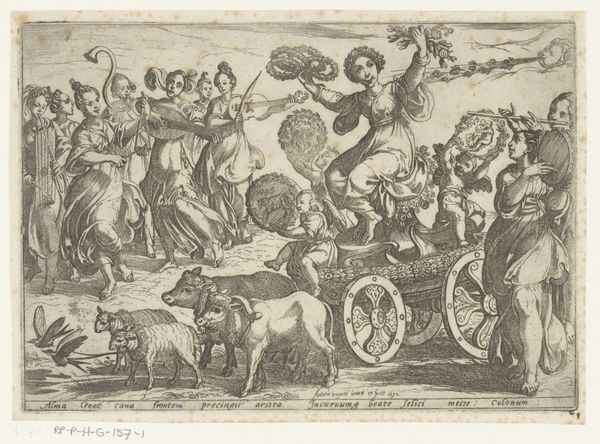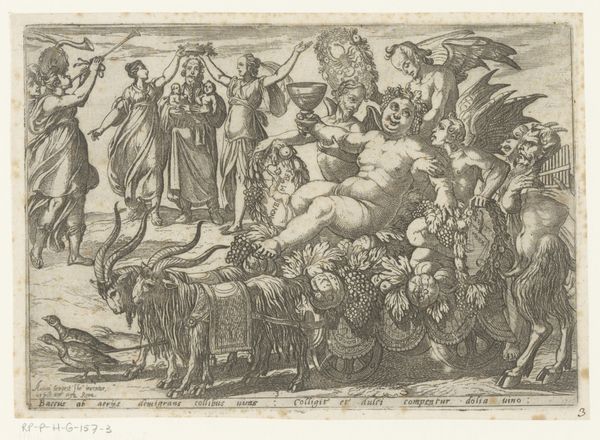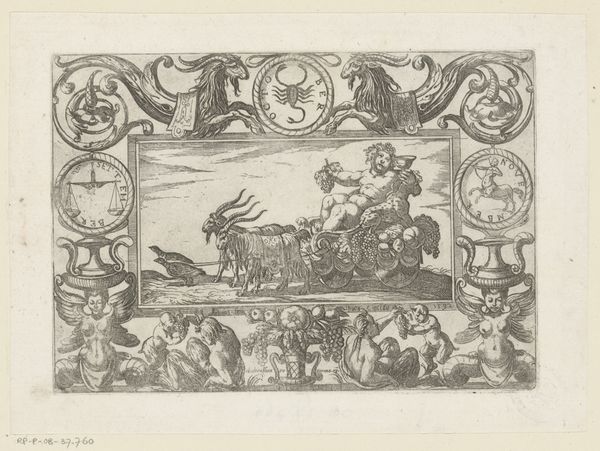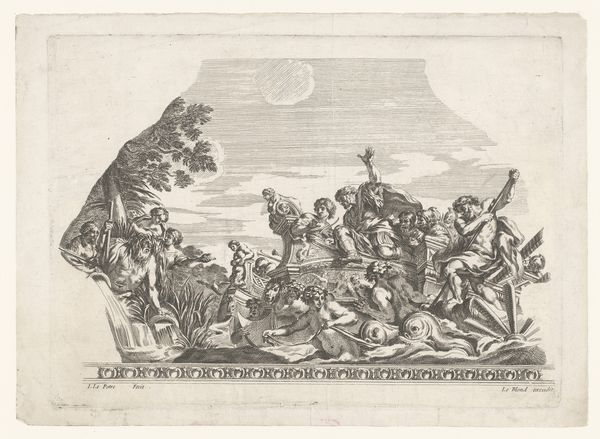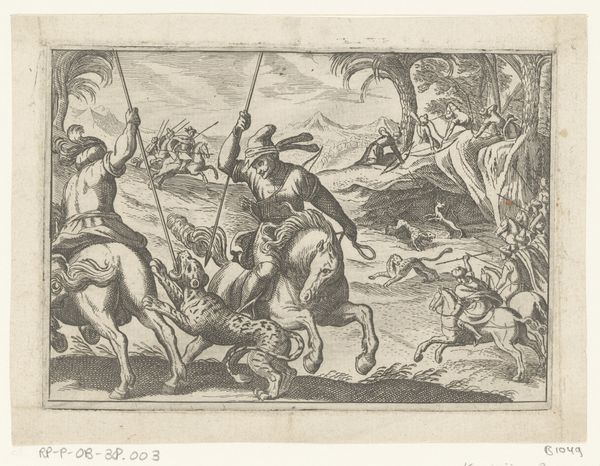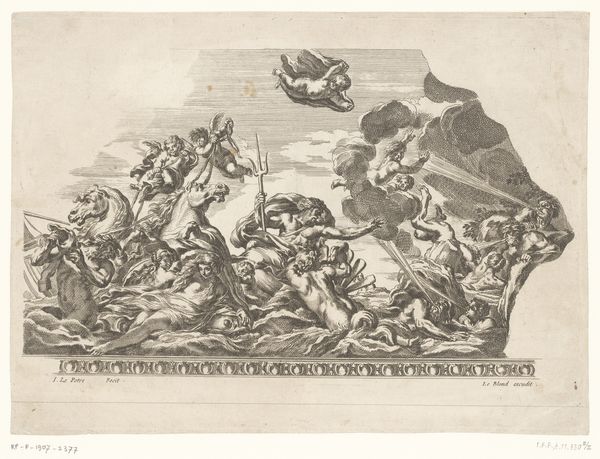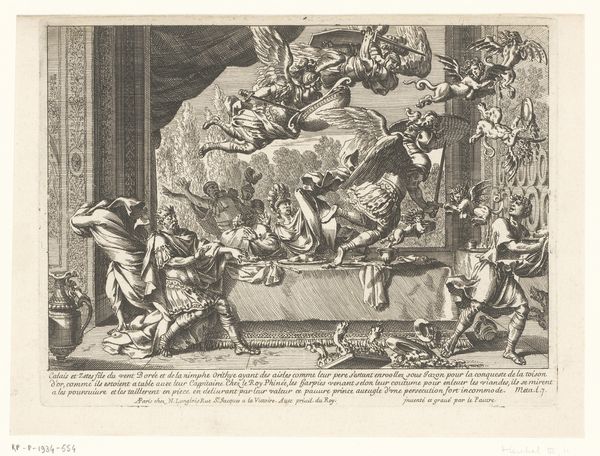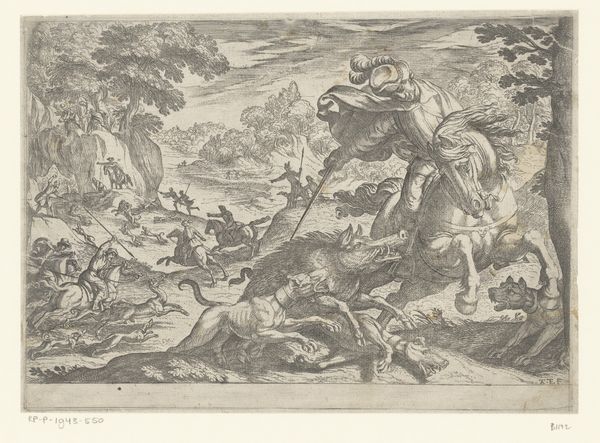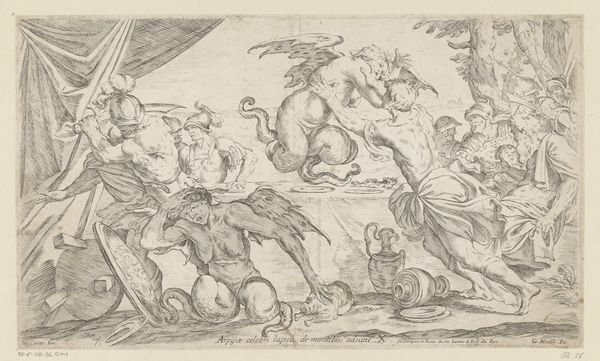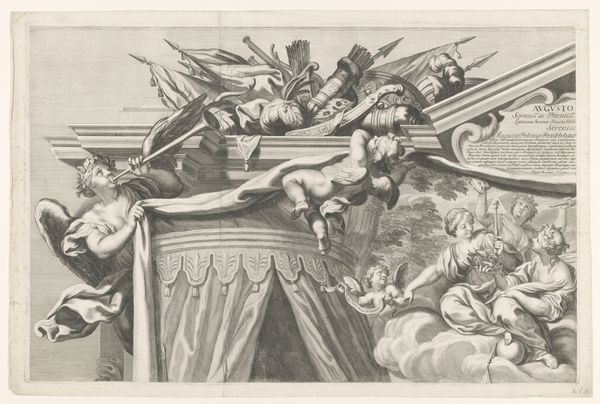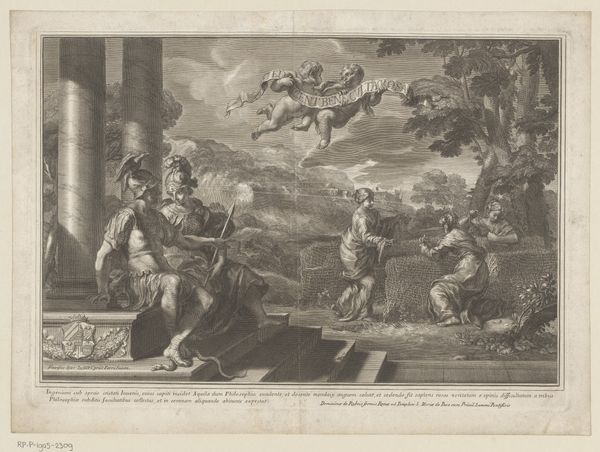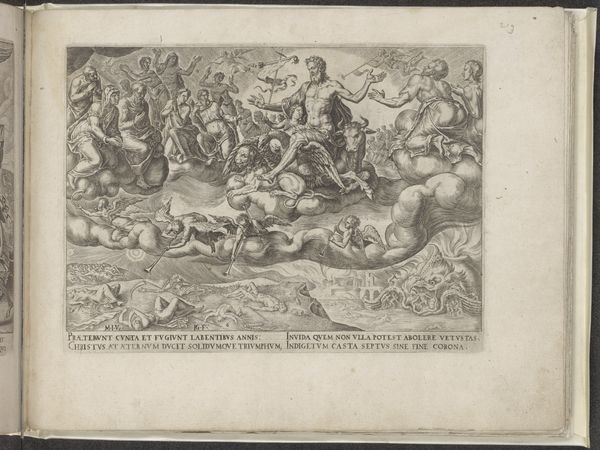
engraving
#
ink drawing
#
baroque
#
pen sketch
#
figuration
#
line
#
history-painting
#
engraving
Dimensions: height 141 mm, width 414 mm
Copyright: Rijks Museum: Open Domain
Pierre Brebiette made this etching, "Centaurs Disrupting a Sacrifice", sometime in the early to mid-17th century. As an etching, it belongs to the world of printmaking, a means of production that allowed for the wide circulation of images. The process begins with a metal plate, likely copper, coated with a waxy ground. The artist then scratches an image into the ground, exposing the metal. When the plate is submerged in acid, the exposed lines are eaten away, creating grooves. Ink is applied to the plate, filling these grooves, and the surface is wiped clean. Finally, paper is pressed against the plate, transferring the ink and creating the print. Note the graphic quality of the image: line is everything. Through hatching and cross-hatching, Brebiette creates a sense of volume and shadow. The very act of engraving – the labor involved, the controlled and precise cutting – gives the scene its tension. While the scene depicts a moment of chaos, the etching itself embodies a kind of rationalized production. This tension between the subject and the method is what makes the print so compelling, and ultimately challenges the traditional distinctions between art and craft.
Comments
No comments
Be the first to comment and join the conversation on the ultimate creative platform.
